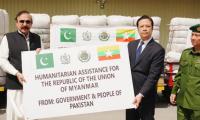Misplaced priorities and rampant mismanagement have long been the hallmarks of Pakistan’s energy sector, and the gas subsector is no exception. For years, the abundance of domestic gas production tended to obscure the anomaly of below-the-cost prices of piped natural gas. For the last few years, however, the winter routinely reminds us how unsustainable the whole enterprise is. Sadly, though, the realization evaporates as soon as spring sets in, and the rotten system plods on through the summer until the next winter arrives.
This winter, however, the gas crisis promises to be much worse than before. The war in Ukraine cut Europe off from Russian LNG supplies last year, sending the dirt-cheap Gulf gas prices to the stratosphere. The consequence for us was that some of our suppliers chose to pay the penalties for defaulting on their commitments and still made profits by selling the same cargoes to European buyers at exorbitant prices. Russian gas supplies to Europe have since dwindled further, and from all appearances, will continue to dwindle through the winter. This means we have been priced out of the gulf muscled out of the LNG spot market for now. While we have our fingers crossed that our suppliers will honour their long-term deals from 2020 and before, Eni’s track record is not too good and the delivery of one cargo per month that we expect from it is far from certain. The long and short of it is that this winter we may have even less gas available than the last to keep our stoves, industries, and powerhouses running. With key government figures making noises about the possibility of gas rationing in deep winter, planned outages are quietly being rolled out. People in several areas of Karachi say their gas supply goes out after midnight and stays shut until 6:00 in the morning. A significant side issue is that the government is in no position to risk the peoples’ wrath. The political capital of the ruling PDM is already running low, and any dreams Prime Minister Shehbaz Sharif had of recouping the losses over the winter months have turned sour. What, then, are the options?
In the short term, the government may want to weigh once more the option of making up the shortfall by purchasing a few cargoes on the exorbitant spot market. If that, however, is out of reach because of our limited fiscal space given how strict the International Monetary Fund (IMF) has decided to be on us, bringing rationing forward for everybody may be a good option. Not only should this strategy help us conserve more gas for deep winter, it will also allow the domestic sector to make the necessary adjustments before the freeze sets in. Minister of State for Petroleum Dr Musadik Malik is busy lining up supplies of LPG cylinders to help out consumers hit by the planned load management, but does he realize that going from piped natural gas to an LPG cylinder is not a matter of throwing a switch? You have to change or at least concert your appliances, which calls for both time and money.
In the long term, there is no choice but to rationalize piped natural gas prices based on import costs. Supplying domestically sourced natural gas at below-the-cost prices was already a scandal, but continuing to maintain those prices for imported RLNG makes no sense at all. Any subsidy is inevitably a case of robbing Peter to pay Paul, but subsidizing piped natural gas, which is the fuel of the comparatively well-off urban classes, at the expense of the rural population stuck with the vastly more expensive LPG, coal, or firewood is a clear case of robbing the poor to pay the rich. Not only is it morally questionable, it makes no economic sense at all either. The government has no option but to initiate a broad sectoral overhaul, including but not limited to bringing the prices of piped natural gas more in line with international LNG prices so that feeding RLNG into the system starts to make economic sense. Only then can the gas sector get rid of its ugly circular debt, and become attractive for private investment, including foreign direct investment.
There are multiple reasons for this from authorities’ disinterest to lack of creative freedom
Fundamental issue that needs urgent redressal is political and economic alienation of Balochistan’s people
Country’s water shortage woes have reached critical level, and Sindh reporting an overall 50% water shortage
With court scheduled to hear matter again on April 29, inaction of government is becoming increasingly indefensible
Punjab Transparency and RTI Rules of 2014 do little to clarify mode of proactive disclosure
Recent cases of Peca trouble include journalists Farhan Mallick in Karachi, Waheed Murad in Islamabad and Shafiq in...







